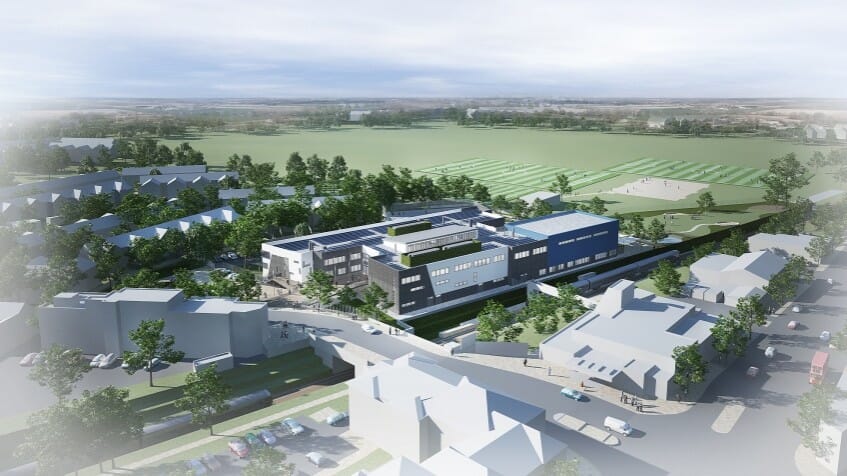The importance of sustainable construction in today’s eco-conscious world
We delve into all things sustainable construction and explore the common sustainable building regulations and green certifications.

Building sustainably is no longer a choice but a responsibility. In today’s eco-conscious world, construction that respects the environment not only preserves natural resources for future generations, but also creates healthier spaces for those who live and work within them. As global awareness of climate change intensifies, the construction industry must continue to evolve to meet stringent sustainability standards and comply with the ever-changing building regulations.
We delve into all things sustainable development below and explore the common sustainable building regulations and green certifications, so you can design your upcoming project with nature in mind.

What is sustainable construction?
Sustainable construction refers to the practice of designing, constructing, and operating buildings in an environmentally responsible manner. It incorporates key principles such as:
- Energy efficiency - designing buildings that consume less energy through the use of advanced insulation, energy-efficient windows, and sophisticated HVAC systems.
- Sustainable materials - prioritising materials that have a low environmental impact, such as recycled steel, FCS wood, and low-carbon concrete.
- Water conservation - integrating rainwater harvesting, greywater recycling, and water-efficient appliances within the building’s design.
- Waste reduction - implementing smart waste management strategies to minimise the amount of waste sent to landfill during and after construction.
- Biodiversity - designing buildings with nature in mind i.e. including green roofs and sustainable landscaping to help promote biodiversity.
Why is sustainability important in construction?
Building assets are currently responsible for approximately 39% of global energy-related carbon emissions, with 28% coming from operational emissions and the remaining 11% from materials and construction. By adopting more sustainable building practices, we can significantly reduce this footprint and achieve lower greenhouse gas emissions over the lifespan of an asset.
However, the importance of sustainability in construction extends far beyond environmental benefits. Sustainable buildings also provide:
- Regulatory compliance - sustainable buildings are more likely to comply with building regulations, helping you to avoid hefty fines and penalties associated with non-compliance.
- Green certifications - designing with sustainability at the forefront can also help your building achieve green certifications such as BREEAM or HQM, which offers a number of environmental, economic, and social benefits. Read our blog post on ‘the benefits of BREEAM-certified buildings’ for further information.
- Cost savings - buildings that use energy efficiently lead to lower utility bills and operational costs for occupants, making them more cost-effective in the long run.
- Improved occupant wellbeing - buildings that are designed with factors like air quality and natural lighting in mind contribute to much healthier indoor environments for occupants.
- Resilience to climate change - sustainably-constructed buildings can withstand extreme weather conditions and temperatures, helping to reduce the risks associated with climate change.
Sustainable building regulations and green certifications
The construction industry is increasingly being guided by strict sustainability regulations and certifications. These frameworks help to reduce the industry’s carbon footprint and improve building efficiency.
The key regulations and certifications that you should be aware of include:
BREEAM
BREEAM (Building Research Establishment Environmental Assessment Method) is one of the most widely used sustainability assessment methods in the world. It evaluates a building’s environmental performance across a wide range of factors, including energy, health, transport, water, and material usage. You can discover more about the certification on our BREEAM webpage.
At Encon Associates, our expert team of BREEAM Assessors have over 18 years experience in conducting BREEAM assessments for all building types, and we are exceptionally proud to have never missed a targeted rating. If you need assistance with achieving BREEAM certification for your upcoming project, contact one of our BREEAM Assessors today.
Part L Building Regulations
Part L Building Regulations is a set of standards that focuses on reducing energy and carbon in buildings. The standard is divided into two parts: part L1A for new builds and part L1B for renovations of existing buildings. Part L Building Regulations are mandatory, meaning all new and existing buildings must comply with the minimum baseline requirements.
We offer a wide array of services to mitigate commonly required planning conditions, including Tree Surveys, Flood Risk Assessments, SAP Calculations, Speed Surveys, and much more. If you’re unsure about building regulations compliance, we are always on hand to provide advice and support to keep your construction project running smoothly.
Future Homes Standard
Set to be released in 2025, the Future Homes Standard (FHS) is the updated version of Part L Building Regulations. It seeks to improve the Dwelling Emission Rates (DER), Dwelling Fabric Energy Efficiency (DFEE) and the Primary Energy Rate (PER) for new buildings. This regulation aims to ensure that new homes produce 75%+ lower carbon emissions compared to current levels.
Read our dedicated Future Home Standard blog post for more information about compliance with the new Standard.
Biodiversity Net Gain
Biodiversity Net Gain (BNG) is a legal requirement under the Environment Act 2021 that mandates new developments to deliver a minimum of 10% biodiversity compared to the baseline, which must be sustained for a minimum of 30 years. Developers must follow the biodiversity gain hierarchy to help create, improve, and protect our natural habitats during and after construction.
Discover more about compliance with the Biodiversity Net Gain standards via our blog post.
Choose Encon Associates as your sustainable construction partner
Investing in green construction is a step towards a more resilient and responsible built environment. At Encon Associates, we offer a range of services to help with achieving common sustainable building regulations and green certifications. Whether you’re seeking BREEM certification or need to comply with Part L Building regulations, our expert team is always on hand to guide you through the complex landscape of sustainable buildings and construction.
Get in touch to discover how we can drive your project toward environmental excellence.